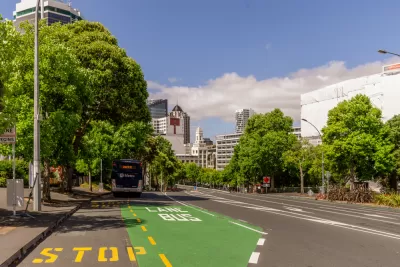Once again, New Zealand shows the way! The national government's new urban development policy will eliminate off-street parking requirements and remove low height-limits near transit stations to encourage more efficient infill development.

"In a dramatic move to reshape New Zealand’s towns and cities, the Government will stop councils from imposing height limits of less than six-storeys and force them to accept developments with no carparks (i.e., off-street parking)," reports Henry Cooke.
"Urban Development Minister Phil Twyford’s National Policy Statement on Urban Development, quietly released on [July 23, 2020], aims to increase the density of housing in urban centres by setting rules for planning decisions made by local councils," adds Cooke.
"The overall intention of the plan is to dramatically increase housing development in urban areas – particularly housing that is very close to public transport. In all urban areas with more than 10,000 people, district plans will not be allowed to include minimum car parking requirements, other than for accessible carparks."
More details are available by clicking on the link for the source article.

Trump Administration Could Effectively End Housing Voucher Program
Federal officials are eyeing major cuts to the Section 8 program that helps millions of low-income households pay rent.

Planetizen Federal Action Tracker
A weekly monitor of how Trump’s orders and actions are impacting planners and planning in America.

Ken Jennings Launches Transit Web Series
The Jeopardy champ wants you to ride public transit.

California Invests Additional $5M in Electric School Buses
The state wants to electrify all of its school bus fleets by 2035.

Austin Launches $2M Homelessness Prevention Fund
A new grant program from the city’s Homeless Strategy Office will fund rental assistance and supportive services.

Alabama School Forestry Initiative Brings Trees to Schoolyards
Trees can improve physical and mental health for students and commnity members.
Urban Design for Planners 1: Software Tools
This six-course series explores essential urban design concepts using open source software and equips planners with the tools they need to participate fully in the urban design process.
Planning for Universal Design
Learn the tools for implementing Universal Design in planning regulations.
Ada County Highway District
Clanton & Associates, Inc.
Jessamine County Fiscal Court
Institute for Housing and Urban Development Studies (IHS)
City of Grandview
Harvard GSD Executive Education
Toledo-Lucas County Plan Commissions
Salt Lake City
NYU Wagner Graduate School of Public Service





























